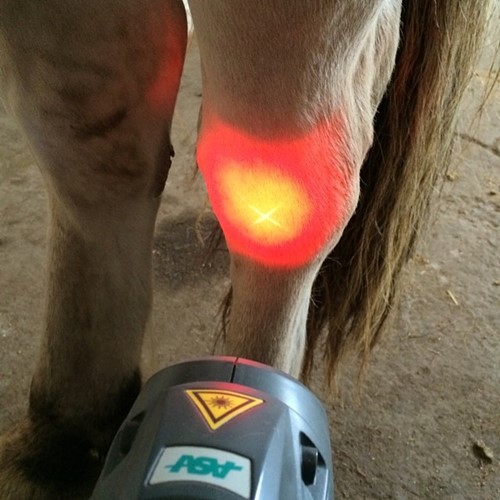Equine Therapy for Injury Recuperation: Exactly How Steeds Help Heal Emotional Wounds
Equine Therapy for Injury Recuperation: Exactly How Steeds Help Heal Emotional Wounds
Blog Article
Reviewing the Efficiency of Laser Treatment in Equine Treatment for Injury Recovery
The analysis of laser therapy's effectiveness in equine injury recovery pivots on numerous aspects, including healing time, pain reduction, and cells regeneration. Vets often observe remarkable results with laser treatment contrasted to standard methods, placing it as an important element in equine care.
Comprehending Laser Treatment
Laser therapy has actually ended up being a critical tool in veterinary medicine, particularly in the treatment of equine problems. Recognized for its non-invasive nature and efficiency, laser treatment involves the application of details wavelengths of light to stimulate tissue fixing and reduce swelling. This healing method is significantly preferred for its capacity to speed up the healing process in steeds experiencing from a selection of musculoskeletal injuries and persistent conditions.
The primary device behind laser therapy is its ability to improve cellular functions. Additionally, laser treatment advertises vasodilation, boosting blood circulation and oxygen shipment to broken tissues, hence expediting healing.
In equine medicine, laser treatment is especially helpful for conditions such as tendonitis, osteoarthritis, and wound healing. The method is lauded for its pain-relieving residential properties, permitting equines to regain flexibility and function extra quickly. Veterinarians also appreciate its minimal side results contrasted to various other treatment modalities, making it a reliable and risk-free option for equine care.

Exactly How Laser Therapy Works

Upon absorption, these photons activate a collection of biochemical adjustments, improving mitochondrial function and leading to boosted adenosine triphosphate (ATP) manufacturing. This surge in ATP speeds up mobile metabolism, promoting cells repair work and regeneration. Furthermore, laser treatment modulates inflammatory actions by influencing cytokine levels and reducing oxidative tension, thereby easing discomfort and swelling.
An additional substantial facet of laser treatment is its duty in boosting microcirculation. The therapy advertises vasodilation, improving blood flow and oxygen shipment to damaged cells (Equine Therapy). This facilitates the elimination of cellular particles and sustains the proliferation of fibroblasts and collagen synthesis, vital for wound healing
Medical Evidence
The efficiency of laser treatment in equine therapy has actually been confirmed via various medical research studies, showcasing its restorative potential throughout a variety of problems. A number of regulated trials and empirical studies have recorded substantial improvements in tissue repair service, pain decrease, and total rehabilitation timelines. As an example, a research conducted by Turner et al. (2012) showed that equines treated with low-level laser treatment (LLLT) for ligament injuries showed sped up healing compared to those obtaining conventional treatments. The research highlighted a significant reduction in inflammation and enhanced collagen formation.
Similarly, research by Johnson and associates (2015) concentrated on equine muscle mass injuries, revealing that laser therapy substantially sped up muscle mass fiber regrowth and lowered muscle mass stiffness. These findings were substantiated by histological analyses showing enhanced muscle cells company. Furthermore, scientific analyses have actually revealed that laser therapy can minimize persistent problems such as osteo arthritis. A research study by Smith et al. (2018) reported that equines with osteoarthritic joints experienced significant discomfort relief and boosted variety of movement adhering to a regimen of laser treatment sessions.
Vet Insights

Veterinarians also value the flexibility of laser therapy. She points out that laser therapy can be tailored to the particular requirements of each steed, ensuring optimum results.
Furthermore, veterinarians value the capacity to integrate laser treatment with various other therapy methods. This multimodal approach can enhance total treatment efficacy, giving an extensive solution for equine rehabilitation. Such recommendations from seasoned professionals underscore the growing acceptance and application of laser therapy in equine medication.
Practical Considerations
A crucial aspect of carrying out laser therapy look what i found in equine therapy involves comprehending the sensible factors to consider that guarantee its efficiency and safety. Primarily, it is crucial to pick the suitable laser gadget, as numerous kinds vary in wavelength, power, and infiltration depth. Equine Therapy. Veterinarians need to be fluent in these criteria to customize treatment methods efficiently to each injury type
Additionally, the frequency and duration of laser treatment sessions need careful planning to make best use of therapeutic advantages while reducing any potential damaging impacts. Regular tracking of the steed's action to therapy can assist needed modifications in the treatment regimen. Establishing a secure and controlled setting throughout treatments is additionally important to prevent unexpected exposure to laser discharges, which can hurt both the horse and the handler.
Educating and accreditation of personnel providing laser treatment are paramount to make certain proper technique and to support security standards. In addition, keeping accurate records of each session, including laser setups and observed outcomes, is essential for examining the total effectiveness of the treatment and for making data-driven decisions.
Final Thought
Laser therapy has actually arised as an efficient technique in equine injury rehab, using considerable benefits in recovery time, discomfort alleviation, and cells recovery. Medical research studies emphasize significant enhancements in you can try this out conditions such as tendonitis and osteoarthritis, credited to enhanced mobile feature and enhanced ATP production. Veterinarian observations affirm these searchings for, highlighting superior results compared to typical therapies. For ideal results, continuous tracking and personalized therapy procedures stay essential in leveraging the complete capacity of laser therapy in equine care.
Report this page